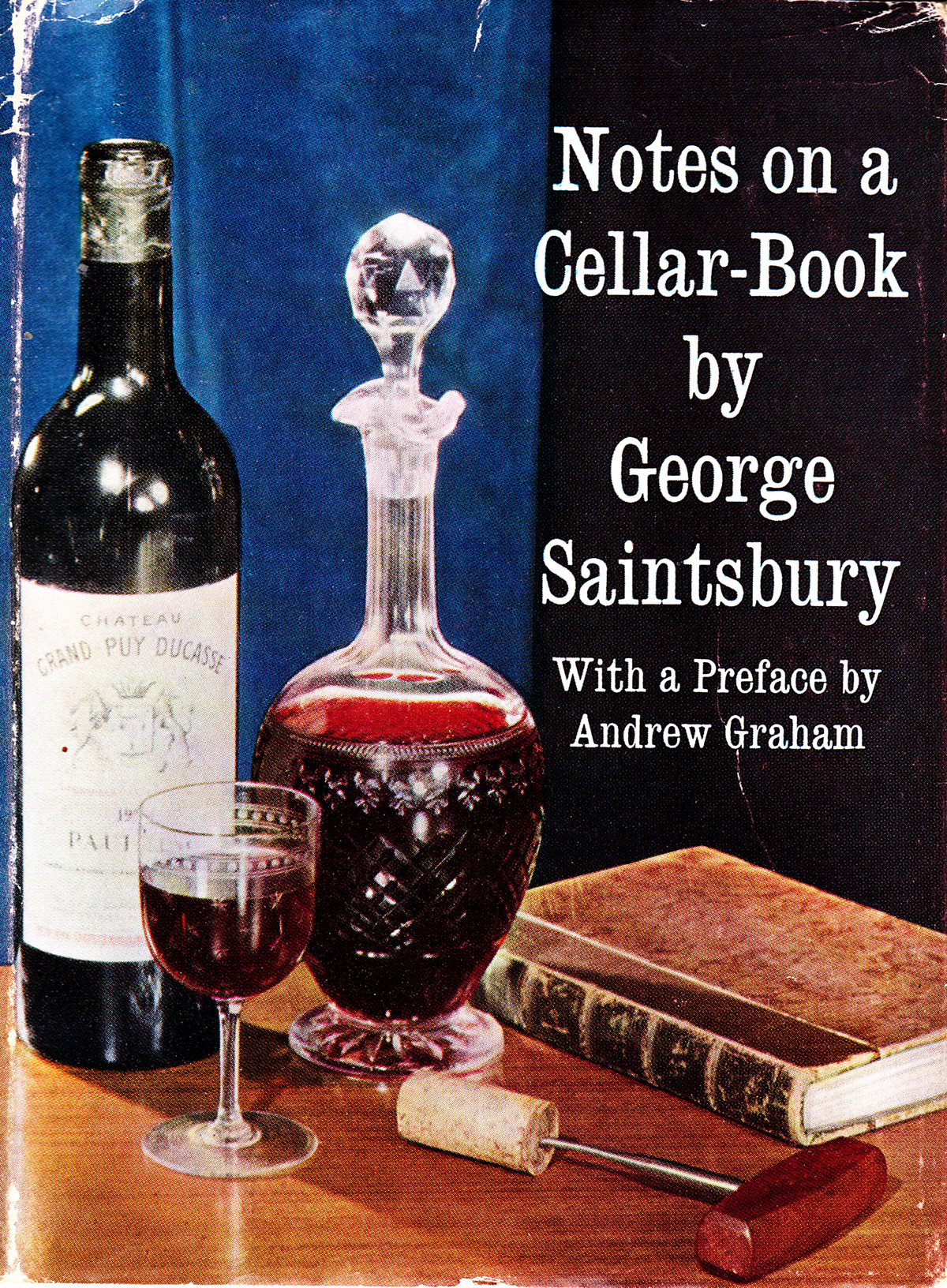Vad har en bok med titeln ”Notes on a Cellar-Book” att göra här på Allt om Whisky? En hel del faktiskt, som ”solerawhisky” till exempel, so brush up your English och häng med ner i källaren.
Vid 75 års ålder publicerade den högaktade Edinburghprofessorn George Saintsbury en bok som var minst sagt annorlunda mot för vad han tidigare skrivit, men som visade att han förutom litteraturhistoria hade ett annat, lika stort intresse: vin och sprit. För även om Notes on a Cellar-Book är en omistlig klassiker som alla som är det minsta seriöst intresserade av vin känner till, och säkerligen har i bokhyllan, så handlar den en hel del om både öl, gin, rom, öl, cider, likörer och – whisky.

Det är en egensinnig bok, informellt och avslappnat skriven och trots att den i mångt och mycket handlar om viner och priser som sedan länge är historia är den synnerligen underhållande, och givande och lärorik. 2008 kom den i en ny upplaga på förlaget California Press med förord och kommentarer av Thomas Pinney, som tidigare skrivit A History of Wine in America.
George Edward Bateman Saintsbury föddes 1845 i Southampton, började tidigt läsa i Oxford och var sedan lärare i klassiska språk under flera år. 1895 fram till 1915 var han professor i retorik och engelsk litteratur vid universitet i Edinburgh. Efter det drog han sig tillbaka och flyttade till Bath där han levde (och njöt av innehållet i sin källare) fram till 1933 när han avled.
Han skrev en mängd böcker inom litteraturkunskap, och bortsett från engelsk sådan var han odiskutabelt en av de mest kunniga om fransk dito. Han initierade bland annat utgivningen av Honoré de Balzacs mastodontverk La Comédie Humaine i ny översättning. Han var tveklöst också en av de kunnigaste vad gällde franska viner, och när han närmade sig slutet arrangerade den legendariske André Simon (Hugh Johnsons läromästare) en middag till hans ära, och det blev början till The Saintsbury Club, som än idag är aktiv och vars medlemmar träffas två gånger om året (i juni förra året hade den sin 105:te middag).

Den ska dock icke förväxlas med kaliforniska Saintsbury Wine Club på vineriet Saintsbury i Napa Valley som grundades 1981 och uppkallades efter just George Saintsbury (som i sin bok dock noterar: ”Of colonial wines I need not speak, for they hardly figure in my book at all; while I never drank any American.”)
Men åter nu till hans egen källare och anteckningar om whisky:
”The people who buy a bottle of ’Green Rhinoceros’ or ’Purple and Yellow’ as they want it, and are satisfied with that, though no doubt they might drink much worse liquor, know little about whisky. Nor do those who think that very old whisky is necessarily very good whisky know much more. One of those grocer-merchants, who dispense good liquor in the Northern Kingdom, and who sometimes have as much as a hundred thousand gallons stacked in their own bonded warehouses, once told me in confidence that he didn’t himself care for ANY whisky that had been kept by itself in cask for more than fifty years. ’It gets slim’, he said; and I am bound to say I agree with him. In bottle, of course, it escapes that fate; but then there it hardly improves at all.
The more excellent way – formerly practised by all persons of some sense and some means north of the Tween – is to establish a cask of whatever size your purse and your cellar will admit, from a butt to an octave (14 gallons) or an anker (ten), or even less; fill it up with good and drinkable whisky from six to eight years old, stand it up on end, tap it half-way down or even a little higher, and, when you get to or near the tap, fill it up again with whisky fit to drink, but not TOO old. You thus establish what is called in the case of sherry a ‘solera’, in which the constantly aging character of the old constituents doctors the new accessions, and in which these in turn freshen and strengthen the old. ‘It should be pretty good’ said a host of mine once in the country house beyond the Forth, ‘it comes from a hundred-gallon cask, which has never been empty for a hundred years’. This is the state of the blessed, to which all cannot attain. But with care and judgment it can be approached on quite a modest scale. I have done it in octaves for both Scotch and Irish whisky, and in ankers for Hollands and brandy, during such time as was allowed me. I think of their fair round proportions now with unsoured fondness.
(…)
When I lived in Scotland the total number of distilleries was said, I think, to exceed two – certainly one – hundred; though not a few of the smaller were not working, as a consequence of the great whisky ‘crash’ of some years earlier. Morayshire alone, the non-metropolitan county which I once knew best, had some scores. But a good many, especially in the south, dealt with grain spirit, and I am speaking only of malt. Taking all those that I have tried, I should say that some certainly stand above the rest. I used to endeavour to supply my cask with, and to keep independent jars of, the following: – Clyne Lish, Smith’s Glenlivet (half the distilleries along and about The Spey from Grantown to the sea tack on the famous Glen to their own names, but ‘Smith’s’ is the accepted premier), Glen Grant, Talisker, and one of the Islay brands – Lagavulin, Ardbeg, Caol Isla, etc. The picturesquely named ‘Long John’, otherwise Ben Nevis, is less definite in flavour than any of those, but blends very well. Glendronach, an Aberdeenshire whisky, of which I did not think much forty years ago, improved greatly later; and I used to try both of these in my cask. But I always kept separate supplies of all, and amused myself with these, alone or variously blended, at intervals. A friend of mine from Oxford days, now dead, held some mixed Clyne Lish and Glenlivet of mine to be the best whisky he had ever drunk.”






